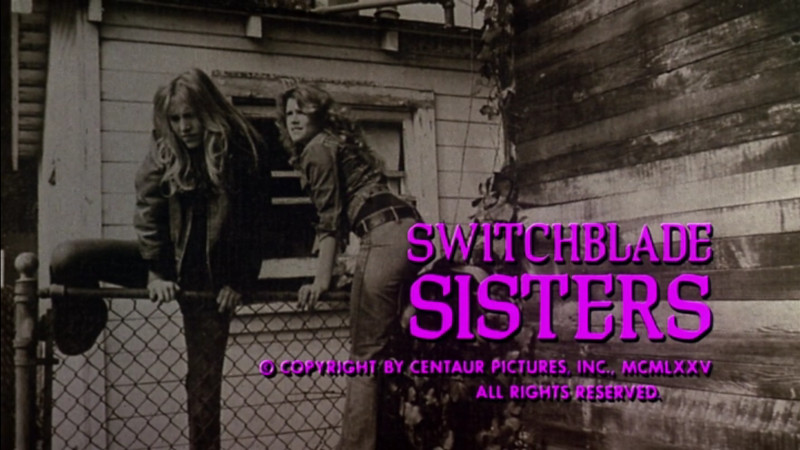
This week’s movie night was Switchblade Sisters (1975), an everythingsploitation film about a girl gang that gets embroiled in a lot of drama over some fairly worthless men. It’s like they knew they wanted to make an exploitation flick but couldn’t pick just one topic, so they picked them all. Lesbian jail scene? Check. Black communist revolutionaries? Check. Girl gang knife fights? Check. Everyone is rapey all the time? Check.
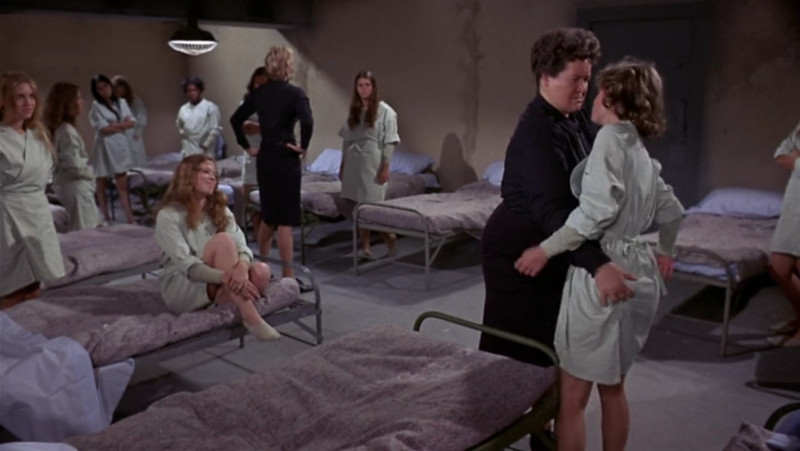
I probably would have found this mixture a lot more charming if it had got down to brass tacks like Faster, Pussycat! Kill! Kill! (1965), in which some ladies go around killing everybody with their tits out for an hour and a half. Pussycat is pretty shameless about what it is, and it pulls it off with a lot of flair. Switchblade Sisters tries to be real drama, which, to be Francis, is really tedious. Why should these kick-ass women spend the whole movie fighting over the men? The men who are, I might add, incredibly underwhelming and almost universally rapey. To be fair they kick the men out of the gang towards the end, but then they spend the rest of the film dealing with the fallout drama from that. I don’t really care about who’s sleeping with who or who’s going to lead the gang. It’s a trash movie and it should just get on with it instead of trying to be Othello (which, no word of a lie, it totally was).
Where’s the Man Candy
All right, this is what we’re all here for. Who’s the prettiest man in this movie?
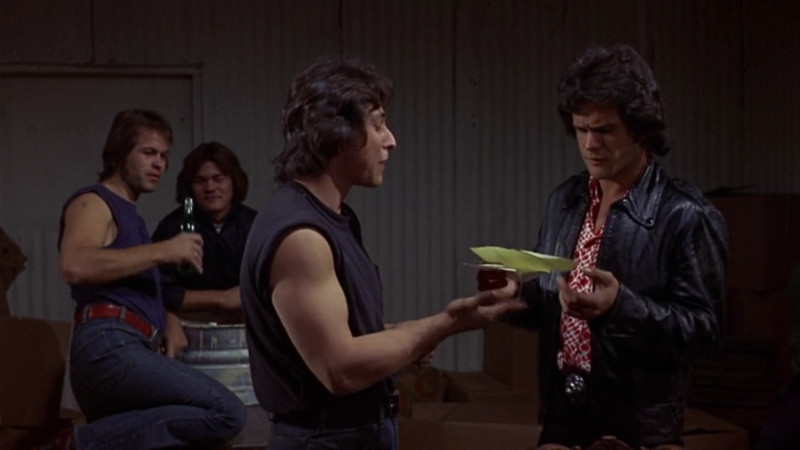
The selection is pretty dire, unless you happen to like hatchet-faced 70s men with bell-bottoms and boofy hair. Him in the foreground has some nice arms, but I can’t deal with the face. It would have to be lights-off time in the bedroom for him, or else I could fit him with a paper bag with a smiley face drawn on in sharpie. Him in the background is a little bit more like it. Believe it or not, that guy on the right is meant to be the subject of all the girl drama. Like anyone would even cross the road to get a closer look at him.
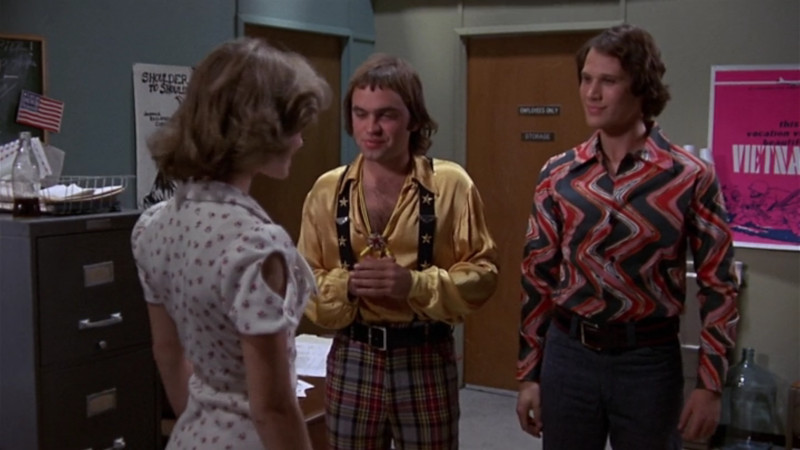
Can we please talk about how the rival gang leader dresses like a rodeo clown? And how his henchman is gay as the day is long? I spent half the movie trying to decipher the smugly gay (or gayly smug) look on his face, and I still haven’t figured it out.
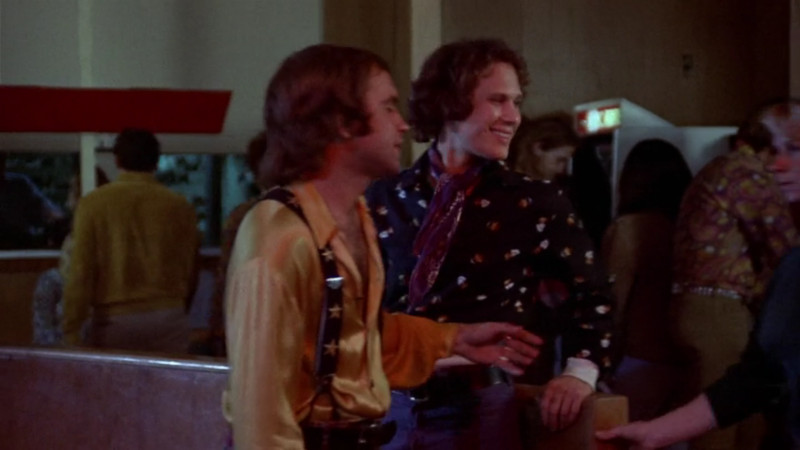
Oh but what’s this now. I didn’t think it was possible but the gay henchman has managed to find an outfit that’s even gayer than before, and an expression that’s twice as smug. He’s like the Mona Lisa of lesbian girl-gang exploitation roller-rink movies.
The Skinny
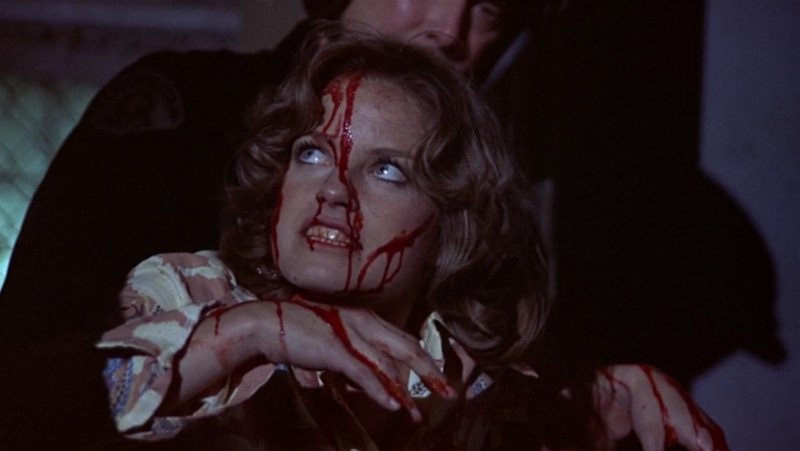
“Not this time, cripple-dick. Everybody knows your crank can hook a tuna.”
Some nicely trashy performances, but ultimately just dull. Apparently Quentin Tarantino named it as one of his favorite films, which makes a lot of sense, but really you could do a lot better than this. They don’t even use the name of the movie in the script. The girl gang is called the Jezebels, but the filmmakers were worried no-one would know what a jezebel was so they named the picture “Switchblade Sisters” instead. Like how they called it “Harry Potter and the Sorceror’s Stone” in America because they were worried Americans wouldn’t know what a philosopher was.